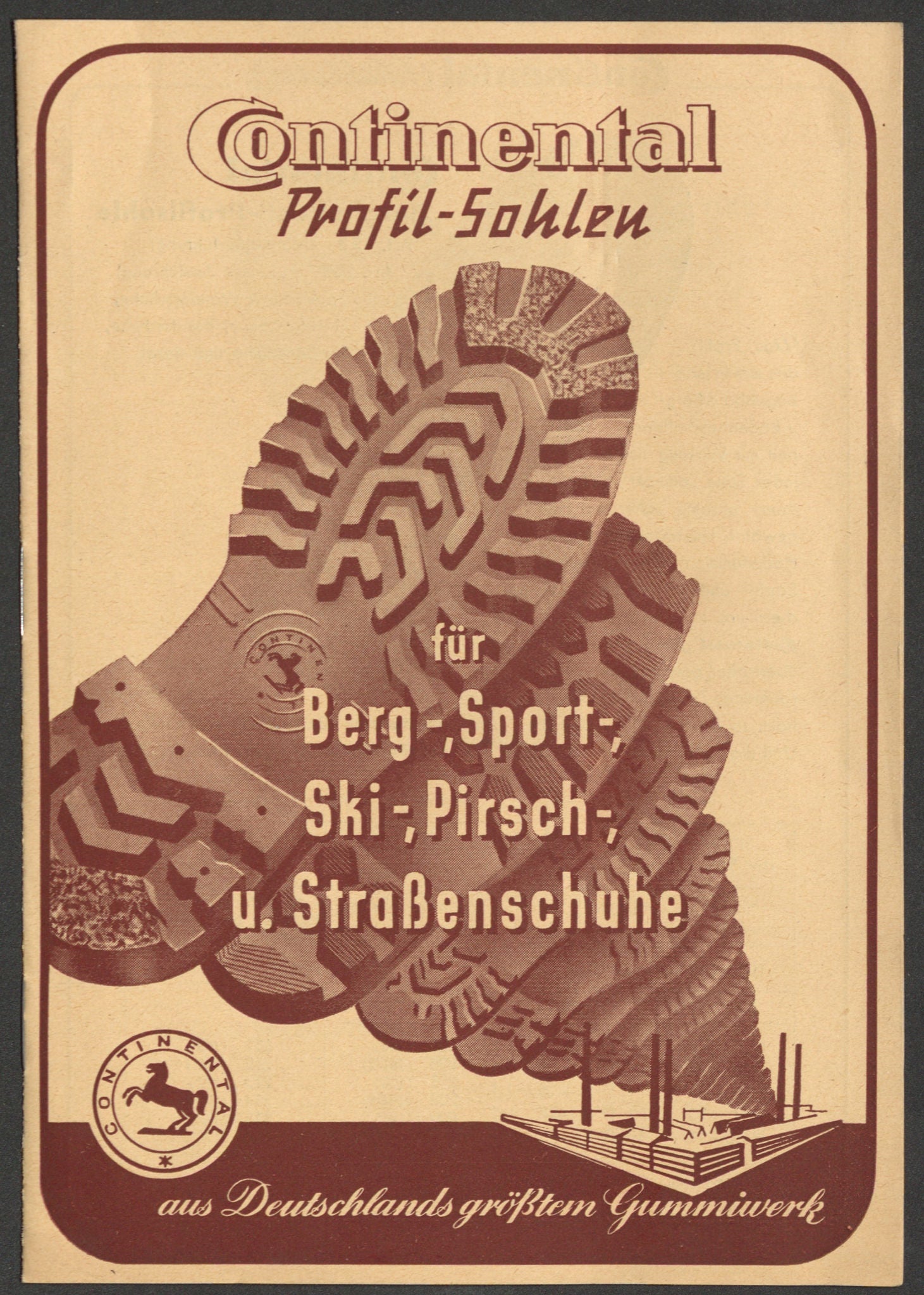# Running
Rubber shoe soles made by us
A brief history

A walk through history on our soles
We may be best known as one of the world’s leading tyre manufacturers, but our 150-year history is full of a variety of innovative products. The Continental Caoutchouc & Gutta-Percha Company was founded in 1871 – 15 years before the first car was manufactured. At the time, industrial use of rubber was still in its infancy. As the list of applications grew, our engineers were continually developing new rubber compounds to find the best formula for each one. In the early days we produced a wide selection of natural rubber goods, from raincoats and hot water bottles to solid tyres for bicycles and carriages. As the 19th century drew to a close, our material experts turned their attention to something new – footwear.
Shoes enter the modern age
In the late 1800s, many people were just beginning to discover a more modern kind of leisure time – one that involved trips to the seaside, walks in the country and games of tennis. As they indulged in more recreational activities, they made an important discovery: heavy work boots or leather-soled dress shoes – the dominant footwear at the time – weren’t up to the job. They needed something lighter, more flexible and with better grip.

The answer, of course, was rubber. And as one of the world’s leading experts in the material, we soon began to supply shoemakers and shoe repair shops with this innovative new footwear solution. Rubber is more durable, grippy, waterproof and lightweight than leather, making it the perfect material for casual wear at the turn of the 20th century.
Early rubber-soled shoes typically comprised a canvas upper glued to a sole around 8 millimetres thick. In the United Kingdom, these became known as ‘plimsolls’ because the coloured horizontal stripes joining the sole to the upper looked like the Plimsoll line on a ship’s hull. And, just like a ship, if water came above the line, the wearer would get wet. In the United States, meanwhile, they inherited the name ‘sneakers’ as they allowed wearers to quietly and nimbly sneak up on people.

As time went on and rubber technologies were further refined, we continued to diversify our product portfolio. Soon there were solutions for every possible situation – from heavy-duty soles for construction workers to heels that prevented puddle splashes from spoiling the backs of trouser legs. At the same time, we were making similar advances with tyre development, so that portfolio was also growing and diversifying. By the 1920s and 1930s, rubber-soled sports shoes were really taking off and brands like Converse, Keds, Reebok and the Dassler brothers (who later founded adidas and Puma) became household names. Whilst we increasingly focused on producing tyres for the booming car sector, we continued to dedicate our expertise to state-of-the-art footwear.

Back to our rubber roots with adidas
 adidas Ultraboost 21 running shoes with Continental rubber outsole
adidas Ultraboost 21 running shoes with Continental rubber outsole
In the post-war years, car ownership rocketed around the world. To meet this growing demand, we devoted more and more time to our core competency of making tyres and eventually stopped the production of shoe soles in the late 1990s.
This all changed in 2007. At the time, adidas were looking for an expert partner from the rubber industry. Their goal was to improve the grip on their running and outdoor shoes, boosting performance and increasing safety. Tyres and shoe soles have plenty in common. Just like the tyres of a car, soles for active footwear have to cope with very high loads, different surfaces and a variety of weather conditions. They must also withstand temperatures ranging from -20°C to 40°C. Faced with all of these challenges, the rubber and the tread design are essential to the performance of the product, whether it’s a tyre or sole of a shoe.
So, together we began to experiment. Our engineers relished the chance to reconnect with tradition and apply their expertise to a different area once more. But the return to the shoe business also posed plenty of new challenges. Not only must soles must adhere firmly to the upper, they have to safely negotiate a wider range of surfaces, including grass, sand, wood and tiles. The production processes for tyres and shoes also require totally different equipment.
Our initial efforts involved a rubber compound used for wet-weather motorcycle tyres. But this proved a little too effective: it produced a shoe with so much grip, you could almost walk up walls in it!
adidas shoes with Continental soles - a record breaking partnership
After years of testing a variety of natural and synthetic rubber compounds, supported by research marathons, development sprints and testing competitions, our engineers finally found a winning formula. The resulting sole offers 30% more traction and have now been applied to over 250 different adidas models. 15 years on, more than 60 million pairs of adidas-Continental shoes have now been sold and the partnership has celebrated multiple athletics world records and Olympic medals.
 Continental’s rubber expertise, based on over a century of tyre manufacturing, is applied to shoe soles
Continental’s rubber expertise, based on over a century of tyre manufacturing, is applied to shoe soles
But we’ve only just begun. The way we make, use and reuse rubber is continually evolving. New rubber compounds, technologies and a growing focus on sustainability are leading to new and improved processes and products. In addition to continually improving the grip of our rubber outsoles, we are always optimising the abrasion resistance of materials used and seeking new ways to adapt the tread to the shoe and its use. We look forward to many more years of research, innovation and record-breaking together.